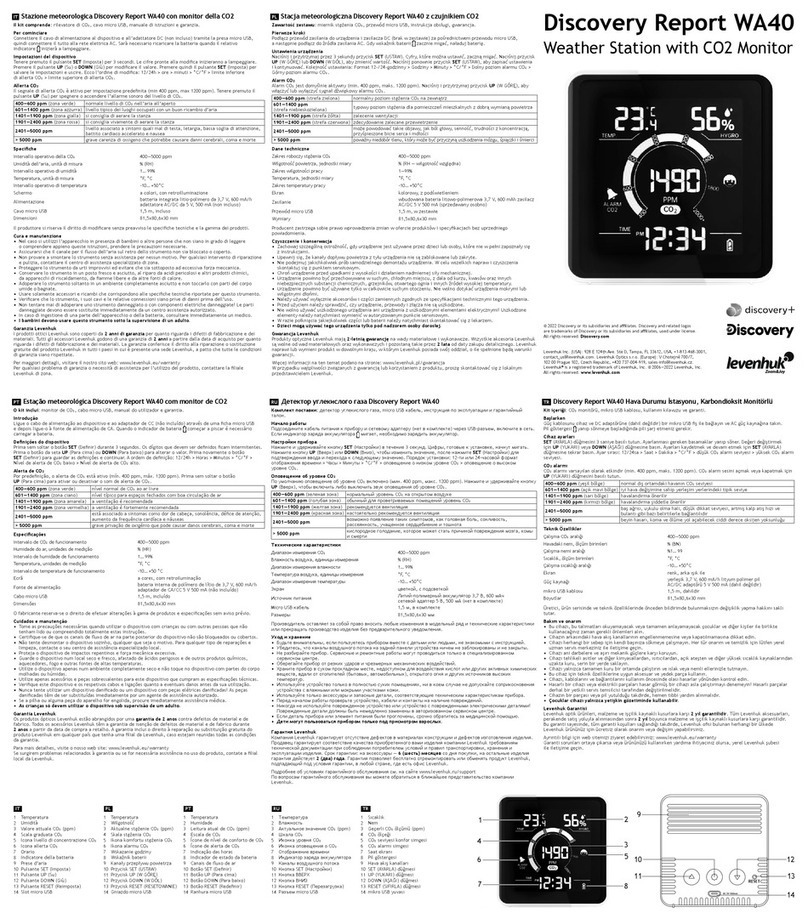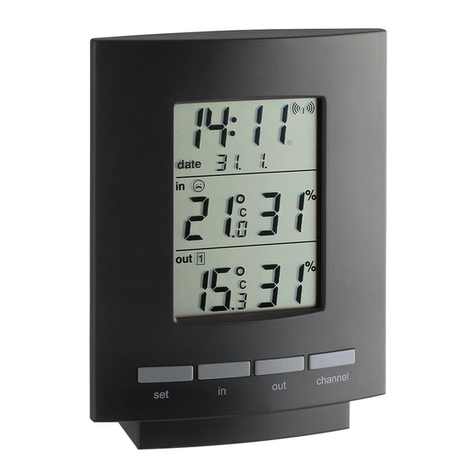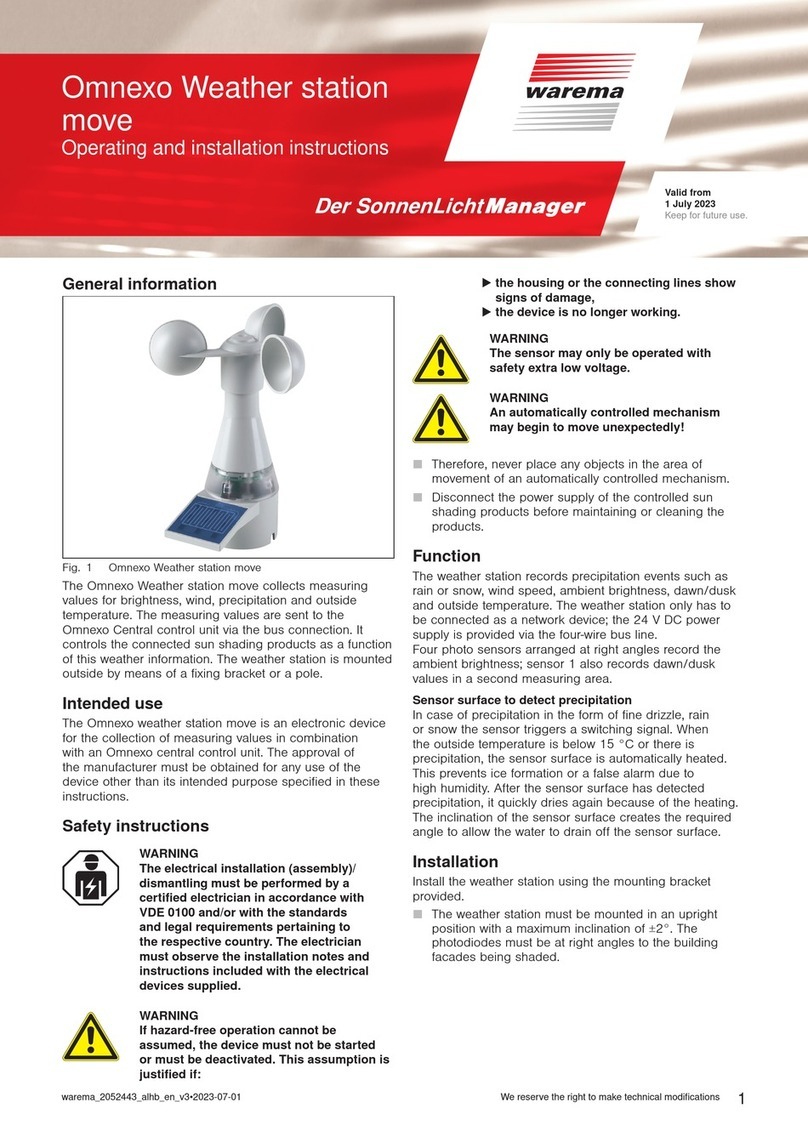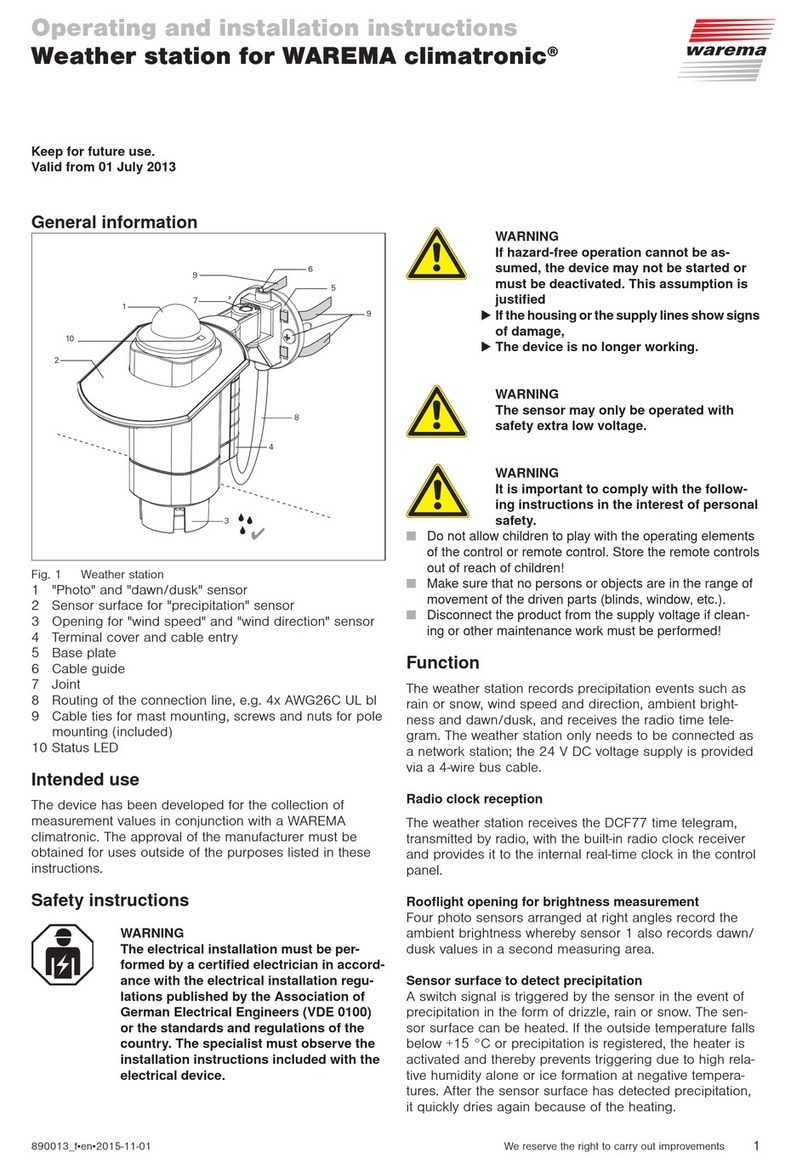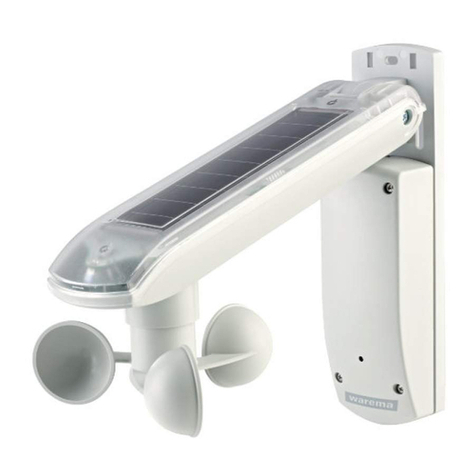
890464_k•en•2019-10-01We reserve the right to carry out improvements
6
For this function, the wind
speed limit may not be set to
TEST and the brightness limit
value may not be set to OFF
at the weather station.
Switch on precipitation
monitoring: Press the
button on the weather sta-
tion. The status LED lights
up green permanently when
precipitation monitoring is
switched on.
Place receiver1 into learn
mode: Take the hand-held
transmitter into which the mas-
ter channel was just learned (I),
press and hold the learn but-
ton, external venetian blind1
waves once, release the button.
Learn in the weather station
as an auxiliary channel: Press
the button on the weather
station and hold until the sun
shading system stops moving
(the external venetian blind
waves three times). The weath-
er station is now an auxiliary
channel for external venetian
blind1. The wind, precipitation
and brightness evaluation was
learned in at the same time.
End the learn mode: Take the
hand-held transmitter with the
master channel (I) and press
the "Up" or "Down" button.
External venetian blind1 now can also be controlled
with the weather station.
The weather station evaluates the brightness, precipitation
and wind speed data and controls the sun shading system
accordingly.
Testing the weather station
Perform the following steps to test the functions of the
weather station.
In the previously described learning procedure, the wind,
precipitation and photo sensors were learned in together.
If you discover during the test that one of the sensors was
not learned in (e.g. due to electromagnetic interference), it
must be learned in again separately.
OTICEN If a sensor that has already been learned in is
learned in again, it is learned out.
Example: During the learning procedure,
only the precipitation and wind sensors were
learned in. If the learning procedure is re-
peated, the photo sensor is learned in but the
precipitation and wind sensors are learned out.
Ι
Ι
1. Test the wind monitoring function
Move the "Wind" switch on the weather station to the
TEST position. Move the sun shading system down
slightly and simulate a gust of wind on the wind sen-
sor. The sun shading system should now move up as
a wind alarm is triggered. The sun shading system
now cannot be operated for the duration of approx.
1minute (wind alarm).
OTICEN In the TEST position, the duration of the wind
alarm is only approx. one minute, after which
the system can be operated again. For all other
settings (see the adjacent limit value table) a
wind alarm takes approximately 10minutes.
The TEST setting should not remain set during
normal operation since the weather station oth-
erwise continuously sends a wind alarm (high
power consumption).
If the sun shading system does not move up, the wind
sensor may not have been learned in. To test whether the
wind sensor was correctly learned into the receiver:
Move the "Wind" switch on the weather station to any
position other than TEST. Move the "Brightness" switch
to OFF. Lower the sun shading system slightly and
press the button on the weather station.
If wind monitoring has been learned in correctly, the
sun shading system moves down for approx. one
second.
If the sun shading system does not move during this test,
wind monitoring was not learned in. Learn in wind monitoring
again separately (see „Learning in functions individually“).
OTICEN In this test, EWFS tubular motors do not re-
spond when the button is pressed.

